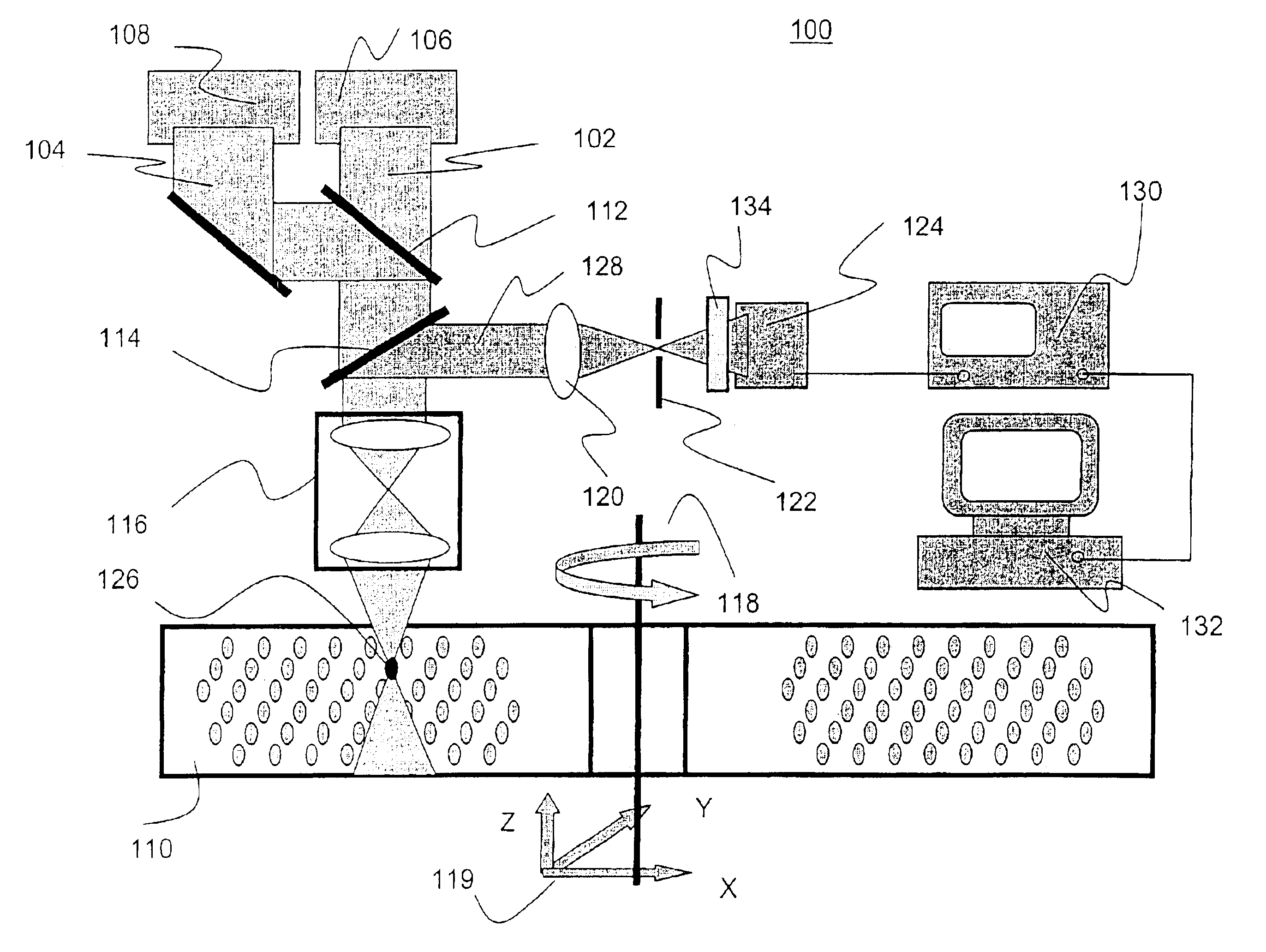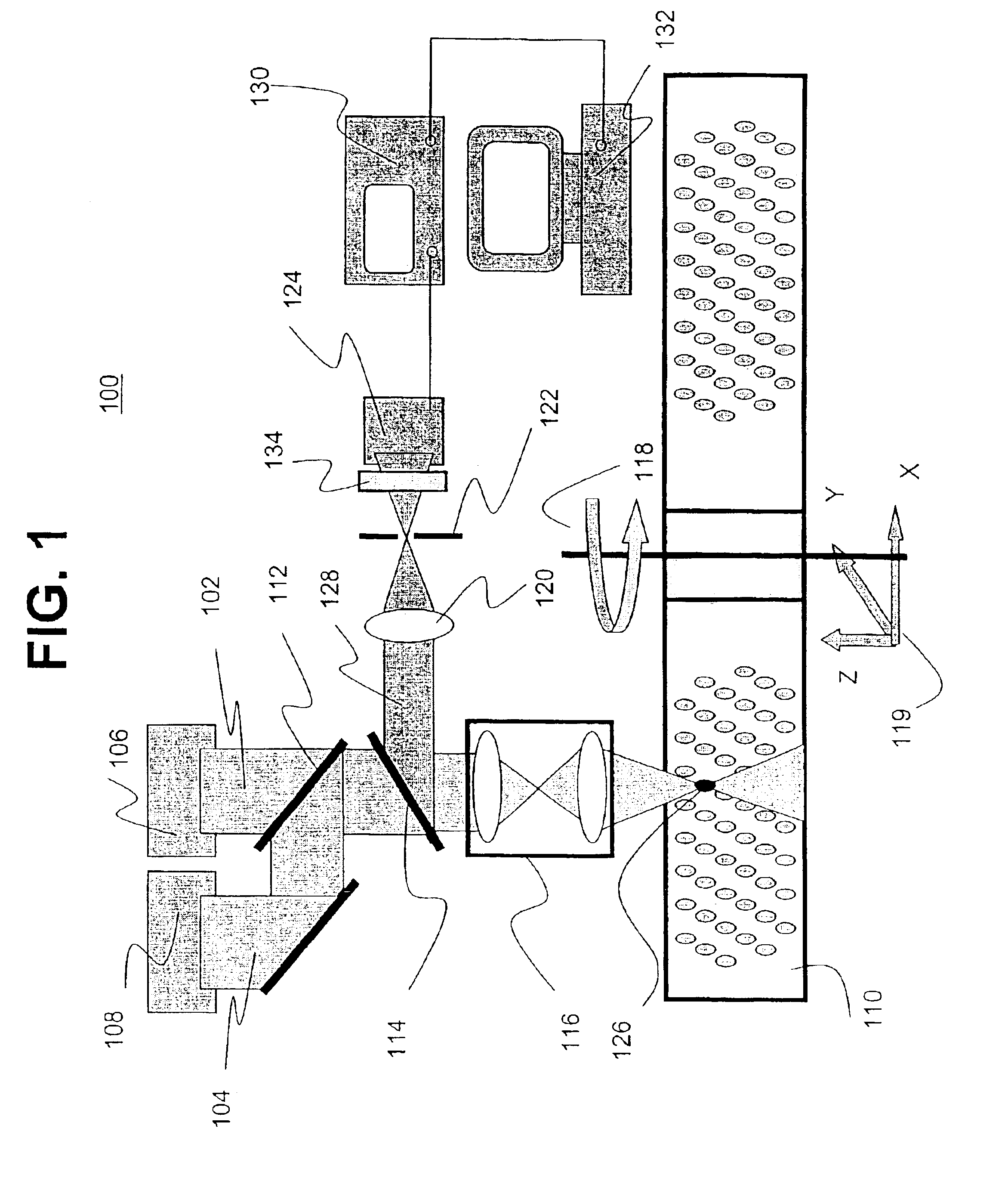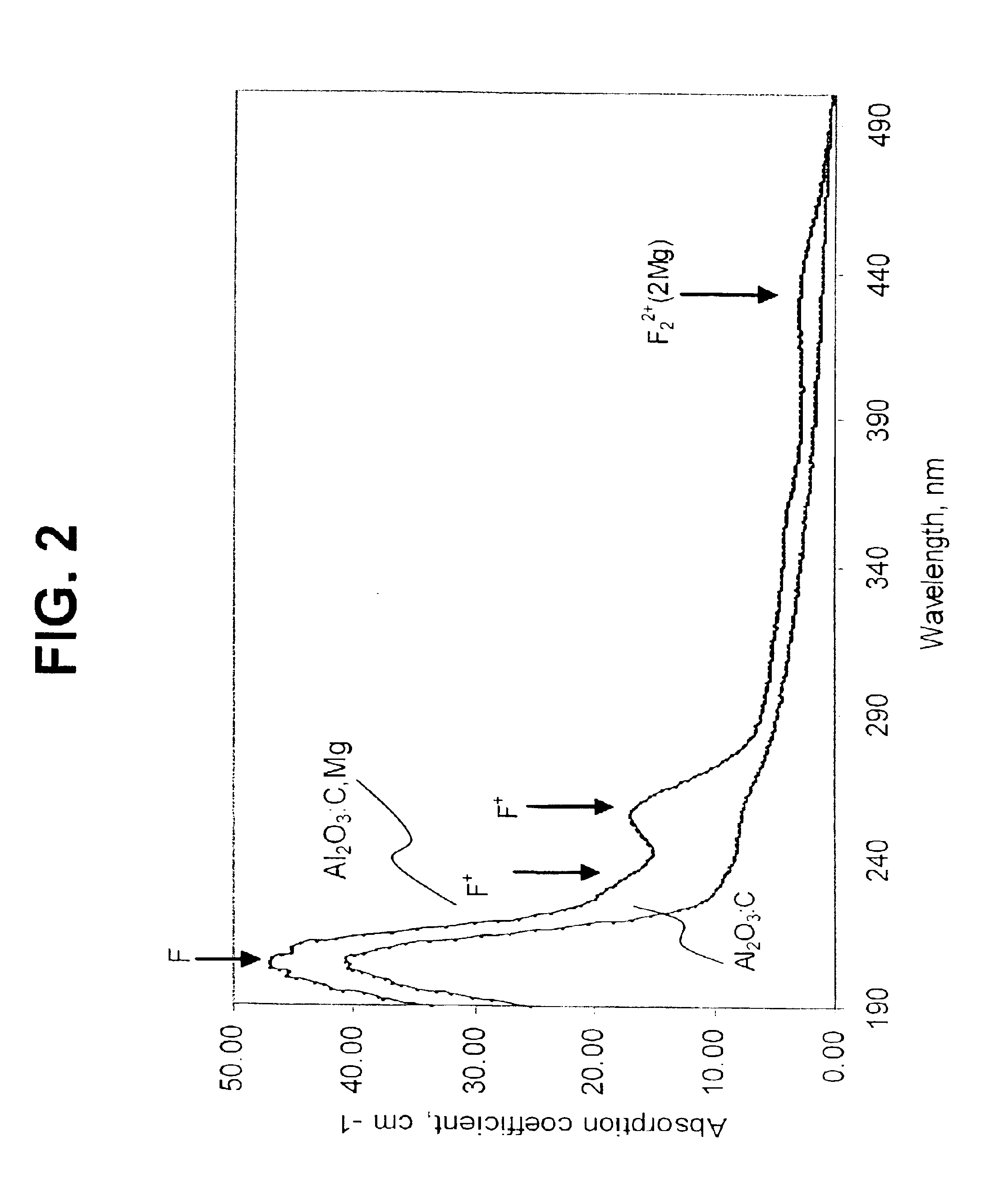Method for thermally erasing information stored in an aluminum oxide data storage medium
a data storage medium and aluminum oxide technology, applied in the direction of optical recording/reproducing/erasing methods, instruments, under protective fluids, etc., can solve the problems of insufficient storage material properties, inability to rewritable photopolymers, and unstable rewritable photopolymers, etc., to achieve fast electronic processing
- Summary
- Abstract
- Description
- Claims
- Application Information
AI Technical Summary
Benefits of technology
Problems solved by technology
Method used
Image
Examples
example i
[0138]An optical data storage apparatus of the type illustrated in FIG. 1 was used for demonstrating the methods of the present invention. Both “write” and “read” laser beams were produced by respective semiconductor lasers built using Nichia laser diodes. Two types of writing lasers were tested: CW modulated laser from Power Technology, producing 18 mW of power at 405 nm and a PicoQuant pulsed laser, generating 1.5 mW at 411 nm (20 MHz, 60 ps pulse duration, 400 mW of peak power). Power of the “read” laser (440 nm, 3 mW) from Power technology was controlled using neutral density filters. The two laser beams were directed on the Al2O3:C,Mg crystalline storage media through a flipping mirror, dichroic mirror and a Nikon CFI PLAN FLUOR (0.85 NA, 60×) objective lens. This infinity conjugate objective lens has an optical component for manual spherical aberration compensation.
[0139]A single crystal disk of Al2O3:C,Mg was attached to the Polytec PI combined 3D stepper-piezo translation st...
example ii
[0141]An Al2O3:C,Mg crystal plate 1.8 mm thick was cut from a crystal boule 45 mm in diameter. It was polished on both sides and installed in the test stand, described in the Example I, perpendicular to the optical axis of the objective lens with the crystal optical c-axis parallel to the polarization of the laser beam. The concentration of color centers responsible for the blue absorption band at 435 nm and green luminescence at 520 nm was estimated to be 17,000 centers per cubic micron.
[0142]The test was performed in the following sequence. The “write” operation was done using either modulated CW or pulsed laser diodes controlled by the computer interface board. Both types of lasers gave similar results, but the pulsed laser requires less energy per bit and produces better spatial resolution. The crystal medium was moved in the XY plane in step increments using piezo-actuators. During readout the crystal medium is translated in a ramp mode in X direction and with the step-incremen...
example iii
[0145]High density recording utilizing the method and the apparatus described in Example I was demonstrated. A 100×100 bit image with 1 μm increments in the X and Y directions (FIG. 13) was written using the 3D piezo-actuator. Each bit was written with 15 nJ of energy produced by pulsed PicoQuant diode laser (1000 pulses per bit). Reading of the bit pattern in fluorescent contrast was performed with a modulated CW-laser beam (440 nm, 15 μW) by scanning a raster with 200 nm between lines. An image having 500×500 pixels was obtained. Spatial profile of several bits spaced 1 μm apart is shown in FIG. 14 and demonstrates a 12% modulation depth.
PUM
| Property | Measurement | Unit |
|---|---|---|
| temperature | aaaaa | aaaaa |
| temperature | aaaaa | aaaaa |
| wavelength | aaaaa | aaaaa |
Abstract
Description
Claims
Application Information
 Login to View More
Login to View More - R&D
- Intellectual Property
- Life Sciences
- Materials
- Tech Scout
- Unparalleled Data Quality
- Higher Quality Content
- 60% Fewer Hallucinations
Browse by: Latest US Patents, China's latest patents, Technical Efficacy Thesaurus, Application Domain, Technology Topic, Popular Technical Reports.
© 2025 PatSnap. All rights reserved.Legal|Privacy policy|Modern Slavery Act Transparency Statement|Sitemap|About US| Contact US: help@patsnap.com



